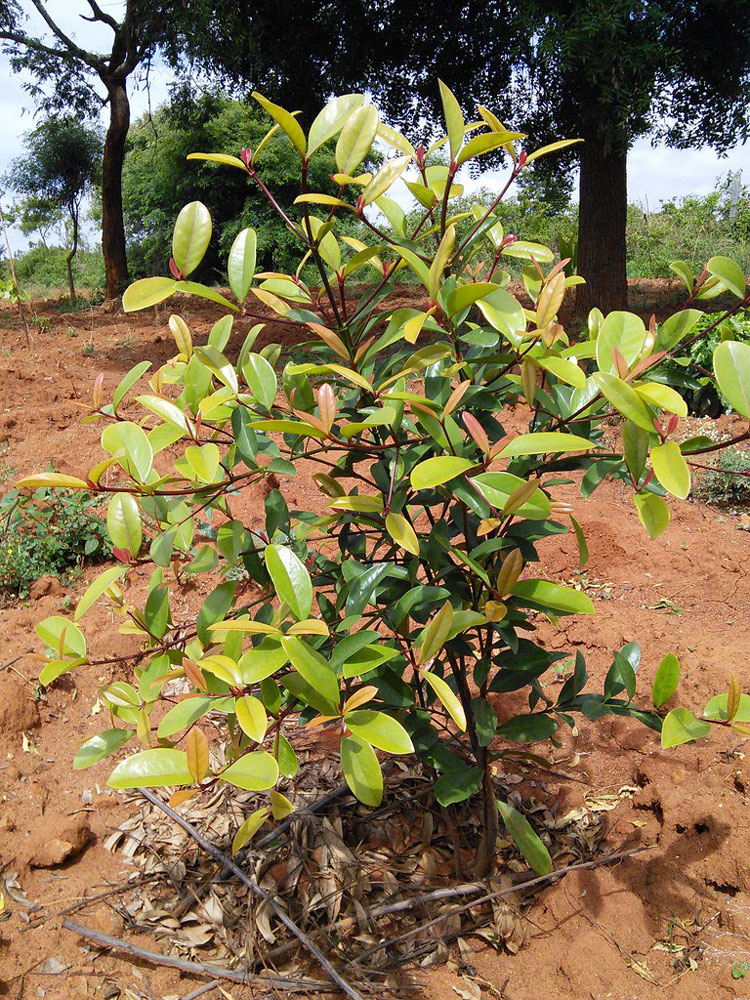Kokum - Mangosteen Tree

Garcinia decipiens
Summary
Scientific Classification
Kingdom: Plantae
Division: Angiosperm
Class: Dicotyledonae
Order: Malpighiales
Family: Clusiaceae
Genus: Garcinia
Species: G.indica
Scientific Name: Garcinia indica (Thouars) Choisy.
Common Names:
English: Kokam, Goa butter tree, Kokum butter tree, Mangosteen.
Hindi: Kokum.
Kannada: Murgina, punarpuli, devana huli.
Marathi: Bheranda, bhiranda, kokamba, kokambi, ratamba, ratambi.
Description:
- Habit and Habitat: Kokum is a tree with a dense canopy of green leaves and red-tinged tender emerging leaves. A tall slender tree with drooping branches it is found in forest lands, riversides and wastelands. These plants prefer evergreen forests.
- Distribution: it is indigenous to the Western Ghats region of India, along the western coast.mostly in Asia and Africa. Garcinia indica is indigenous to the Western Ghats region of India located along the western coast of the country.
- Morphology:
Leaf: Ovate or oblong-lanceolate, acute, glabrous, dark-green above, pale below, red when young.The tree is large and handsome, having elliptic, oblong or oblong-lanceolate, deep-green glossy leaves, 5.5-8 cm long and 2.5-3 cm broad.
Inflorescence: axillary solitary, cymes or fascicles.
Flower: Male flowers terminal and axillary, 4-8 fascicled. Sepals 4, fleshy. Petals 4, thick, longer than sepals.The flowers are fleshy, dark pink, solitary or in spreading cluster.
Androecium: Stamens 10-40, on a short column, filaments short.
Gynoecium: Female flowers solitary, terminal and axillary, stoutly peduncled staminodes in 4 masses, each of 4-7, in one or more rows.Ovary 4-8-celled, stigma sessile, 4-8 lobed.
Fruit: Globose, size of a small orange, berry, become purple colour when ripes.
Seeds: Seeds 5-8, large.
Flowering and Fruiting Time: November – February. - Propagation: Through seeds.
- Importance:
The ripe fruit is edible. The seeds yield the well-known oil or butter-called very useful for healing chaps on the body. The oily extract called kokam is used in ointments and suppositories. The rind of the fruit is a good source of hydroxycitric acid. As they ripen, they get the beautiful purple color. The fruits are plucked when they are ripe. The tree is a source of kokam butter which is used in cosmetics and confectionary. It is used as a staple souring agent typically in Goan cuisine and some parts of Maharashtra and Karnataka. Kokum yields a peculiar flavour and blackish-red colour. As a souring agent, it is used as an alternative to tamarind in curries and other dishes from south India. It is also used in cuisine from Gujarat, where it is frequently used to add flavor and tartness to dal (lentil soup) for flavor balance. - Location: Botanical Garden.
 Trees of GSS Project supported by Makerspace Belgaum Website concept and designe by
Trees of GSS Project supported by Makerspace Belgaum Website concept and designe by